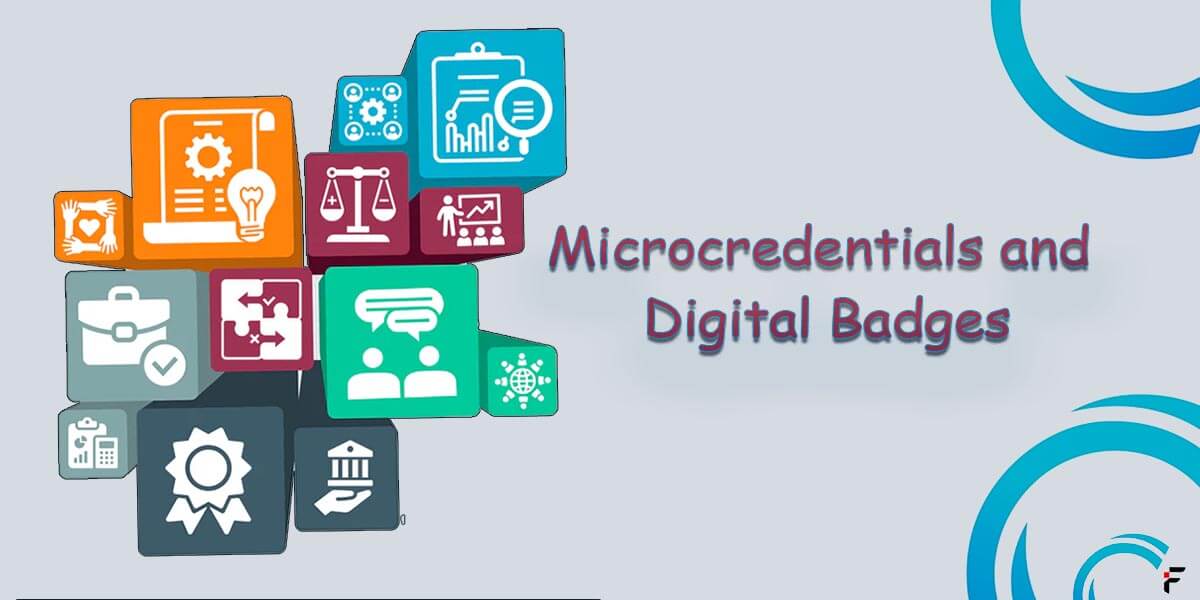As the world of work rapidly evolves, learners at all stages seek flexible and affordable ways to gain in-demand skills through personalized pathways. Emerging approaches like microcredentials and digital badges are opening new doors for competency-based learning and credentialing outside of traditional degree programs. This article explores the rise of these innovative solutions and their potential to transform education.
What are Microcredentials?
Microcredentials, also called nanodegrees or digital credentials, represent certifications earned by demonstrating mastery of specific, job-relevant skills. They typically focus on a narrow skillset that can be learned in a shorter time period than traditional courses or programs. Microcredentials are competency-based rather than time-based, allowing learners to progress through material at their own pace.
Popular examples include microcredentials in data analysis, cybersecurity, project management and coding offered by online learning platforms. These credentials are designed to fit seamlessly into busy schedules and complement degree programs or work experiences. Learners gain credentials stackable toward broader qualifications or directly applicable for career advancement.
How Digital Badges Work
Digital badges provide a way to recognize and verify competencies gained through formal coursework as well as informal learning experiences like volunteering, hobbies and open online classes. Badges contain embedded metadata linking to evidence demonstrating acquisition of skills or qualifications.
Badges are stored and shared online through open platforms, allowing learners to build a visual portfolio highlighting accomplishments easily accessible to employers, schools or other organizations. Earners can choose to keep badges private or publicly display them on social media and professional websites.
Issuers of badges include universities, non-profits, employers and individuals. Popular platforms allow badging across these various stakeholders while maintaining standards. Learners can earn badges representing hard and soft skills difficult to capture through traditional transcripts, like collaboration, communication and critical thinking.
Badges motivate learners and provide opportunities for skills-based hiring and admissions. They also support lifelong learning by allowing individuals to seek new credentials over time as interests and careers evolve. Digital badging presents an open, learner-centered model for recognizing competencies from all types of experiences.
Microcredentials and Digital Badges in Practice

Many institutions now offer microcredentials through affordable, self-paced online programs highlighting specific skillsets. For example, one university developed a microcredential series in project management approved by the Project Management Institute (PMI) for professional development units.
Another program allows learners to earn stackable badges in topics like cybersecurity, cloud computing and coding to build expertise for high-demand IT careers. Individuals can progress at their own pace, fitting learning around work schedules. Upon completing all badges, they receive a certificate of mastery.
Some employers partner with schools to create custom microcredentials recognizing skills directly applicable for available jobs. Candidates who earn these credentials gain consideration for openings with the opportunity to transition into roles upon demonstrated competency.
Open online platforms also enable individuals to earn digital badges showcasing skills and qualifications. For example, learners can earn badges in areas like communication, creativity and digital literacy through free massive open online courses (MOOCs). These badges provide formal recognition for competencies developed through self-directed learning.
Several states now offer digital credentialing programs through which residents can earn state-approved badges in career pathways and core academic areas. Learners document mastery through projects, work experiences and assessments. Earned badges provide verified credentials for skills training, job searching, secondary education and more.
Benefits of Microcredentials and Digital Badges
Microcredentials and digital badges provide affordable, flexible and verifiable alternatives to traditional degrees that recognize competencies however they are gained. Benefits for learners include:
- Increased access to skills training and credentialing outside the traditional classroom
- Ability to progress through material at one’s own pace while balancing other commitments
- Stackable, modular credentials allowing skills-based career exploration and advancement
- Formal recognition for hard and soft skills difficult to capture through transcripts
- Portable digital credentials easily shared with employers, schools and other organizations
- Motivation to continuously build expertise through lifelong learning opportunities
- For employers and educational institutions, benefits include:
- Ability to recognize in-demand skills directly relevant to opportunities or programs of study
- Hiring and admissions processes informed by verified credentials from diverse learning experiences
- Increased transparency into applicants’ competencies through digital credential portfolios
- Alignment of learning and training with rapidly evolving workforce skill needs
- Flexible, affordable upskilling and reskilling options for employees and students
Microcredentials and digital badges present open, learner-centered solutions supporting competency-based learning and credentialing. When implemented according to standards, they offer validated and portable ways to recognize skills regardless of how or where they were developed. These emerging approaches have great potential to transform education and expand economic opportunity through personalized, affordable and relevant pathways.
Microcredential Frameworks and Standards
For microcredentials and digital badges to have credibility and portability, programs must adhere to standards ensuring consistency and quality. Leading organizations are developing frameworks to guide implementation in a manner that benefits all stakeholders.
The Credential Engine works to standardize digital credential data and build infrastructure supporting transparency. Their registry allows cross-referencing of credentials to programs and competencies using common identifiers. This helps learners build coherent portfolios and enables employers/schools to easily evaluate diverse credentials.
Competency-Based Education Network (C-BEN) published quality guidelines for competency-based credentials focused on learner demonstration of skills through direct assessment. C-BEN standards emphasize clear communication of credential purpose/value as well as equitable access for all.
The Education Design Lab also developed a framework for high-quality digital credential design centered around transparency, portability and stackability. Their “Credential Competencies” ensure credentials clearly convey earned skills/qualifications and link to evidence of learning.
Adherence to standards facilitates acceptance and fair evaluation of microcredentials and badges. It also protects learners by signaling credentials represent proven mastery assessed through quality assurance practices. Standards support the growth of competency-based credentialing as a force expanding opportunity through personalized, affordable and relevant learning pathways.
Read More: Best Google Career Certificates for Digital Marketer Resume
Microcredentials and Digital Badges: Conclusion
Microcredentials and digital badges present innovative solutions that recognize competencies however they are gained. When implemented according to standards ensuring transparency and quality, they offer validated and portable alternatives to traditional degrees. These emerging approaches support competency-based learning and credentialing aligned with rapidly changing workforce needs.
By expanding access to affordable, flexible and personalized skills training, microcredentials and digital badges have great potential to transform education. They empower learners to build expertise through lifelong learning opportunities fitting diverse schedules and contexts. In turn, these credentials provide formalized ways to demonstrate mastery benefiting individuals in their education and career pursuits.
As microcredentialing and digital badging continue to evolve guided by frameworks, more learners will be able to stack skills and gain industry-recognized credentials. Educational institutions and employers also benefit from increased transparency into diverse learners’ competencies. Overall, these emerging approaches support student success and a skilled workforce through open, learner-centered models of competency-based learning.




